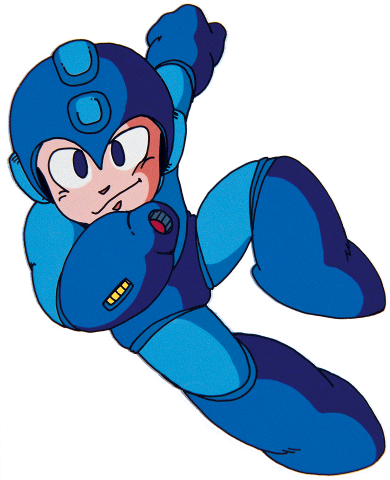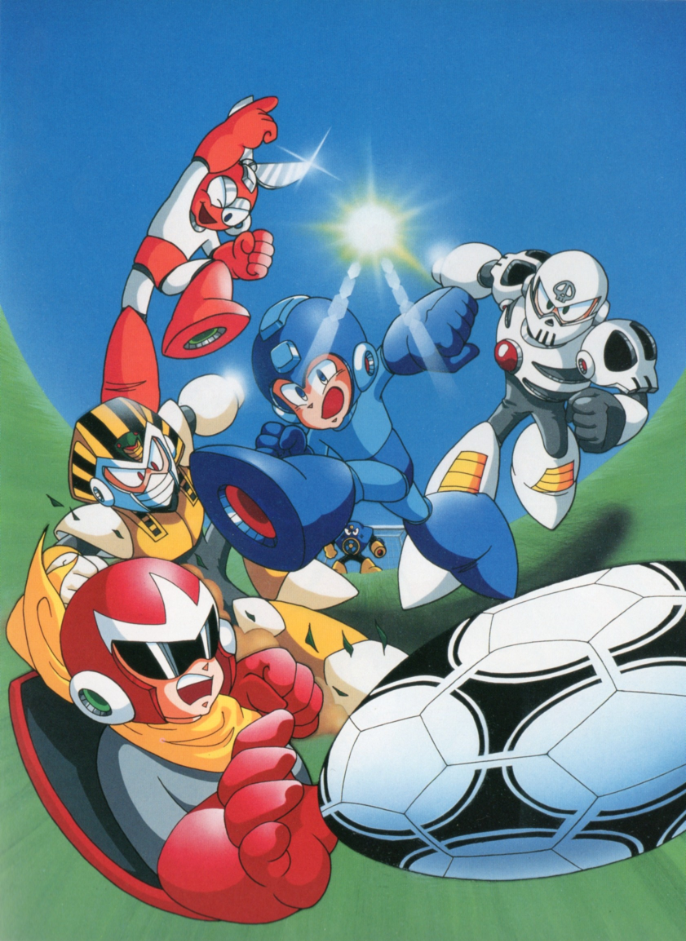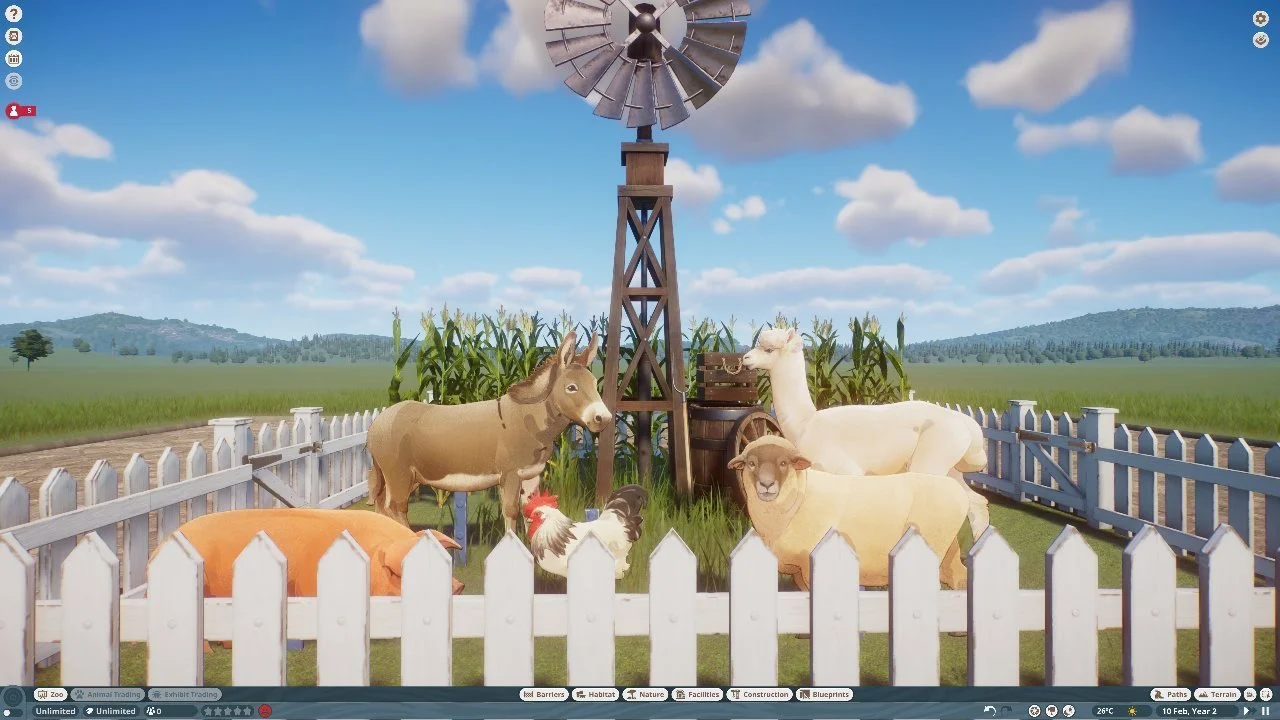Mega Man is an icon of the video game industry. With 35 million units sold and 50+ games divided between 7 sub-franchises, it can be confusing as hell to keep track of all the Mega Men! So let's start at Ground Zero: the original Mega Man series!
Mega Man (Originally released December 1987)
In the mid-1980's, Capcom was an up and coming gamemaker that made a name for itself in the arcade. Their arcade shooter 1942 collected many coins. With its sights set on invading homes, Rockman (Mega Man's Japanese name) was to be one of the first games made by Capcom with the Famicom specifically in mind. I personally see the original Mega Man as Capcom's response to Super Mario Bros.
Mega Man was conceptualized and designed in pixel-art by Akira Kitamura (director of the original Mega Man game), with his googly-eyed design later finalized by Keiji Inafune (who would later become the producer of the Mega Man games halfway through the 1990s). Mega Man's design has a clear Astro Boy influence and was meant to take advantage of the shades of blue from the Famicom's color palette. Kitamura, is somewhat of a ghost of the video game industry. He created an iconic character, but after 2 Mega Man games and a few other titles (such as Little Samson and Cocoron), he quietly retired from the medium.
Rockman's tentative titles were “Knuckle Kid”, “Mighty Kid” or “Rainbow Kid “(the latter because Mega Man changes colors when he copies a Master Weapon). Rockman was the final Japanese name, the idea coming from "Rock n' Roll"; Mega Man's real name is "Rock" and his sister is "Roll". Capcom's North American Senior Vice President at the time, Joseph Marici absolutely hated the name "Rockman" and forced the title Mega Man, with the Japanese game designers following suit with artwork and pixel graphics made to accommodate the North American title.
So who is Mega Man? He's a blue robot who fights for justice in the not-too-distant future of 200X, where robots are part of everyday life! Originally made by his creator, the benevolent Dr. Light to be a household robot, he is modified to become a fighter to battle Dr. Wily, Dr. Light's jealous peer who hijacked Dr. Light's creations out of jealously. You only get this story if you read the Japanese manuals, as the actual game contains little text. The American manuals would modify the story to make it so that Dr. Wily was Dr. Light's assistant or former friend, but that is not part of the original story.
The North American localization process was considered rushed in general, with there being very little distance between the Japanese and North American release dates (They came out in the same month). With the theory that Americans did not want to see a game with Japanese illustrations on it in mind, Capcom USA's president commissioned a box-art; one that was done over the course of an afternoon. This artwork featured what appeared to be a middle-aged man in a blue and yellow laser tag outfit holding a pistol with some kind of ... cybernetic palace and palm trees blowing up in the background. Whatever is being portrayed here, it's some B-grade science fiction thing and it's not Mega Man. I think the artist took the "Man" part a little bit too literally. Inafune hated the box-art and blamed it for the poor sales of Mega Man 1 in the US. The artwork is an inside joke among gamers and is considered to be one of the worst bits of video game-related packaging ever.
The original Mega Man has the pacing and also enacts many tropes of an arcade game. There's a scoring system, the levels never overstay their welcome, there's a sink-or-swim philosophy to level design. But certain aspects make it special: you chose which of the 6 Robot Master stages you're going to tackle, and once you beat the stage boss, you get their special weapon (Master Weapon). In theory, not one particular weapon is supposed to be a one-size-fits-all solution; the gamemakers site Rock-Paper-Scissors as the inspiration for this Master Weapon hierarchy, Elec Man's Power beat's Ice Man's, Fire Man's power beat Bomb Man's and so-on.
The original Mega Man is considered to be a difficult game. I personally no longer think that's true, but It's certainty not easy the first time around. There are quite a few instant death scenarios. One thing that I see mess new players up is that the invincibility frames from damage don't apply to the insta-kill spikes. Master of Mega Man is less about reflexes and more about understanding the game's patterns.
So you can battle the Robot Masters in any order, and once you conquer all 6, this opens up the final stages: Dr. Wily's laboratory which you run through in a mutli-part gauntlet. These are much harder than any of the previous stages and the final Wily machine is a bit of a doozy. But once he goes down, Mega Man returns to peace and comfort of home.
Mega Man 2 (Originally released December 1988)
Inafune said in an interview for the G4 TV series Icons "After we got the game done, we took it to [Capcom] Sales and we said 'we got the game done, this is what it's like" and they said... 'there's no way this will sell.'"
Mega Man was a liked game but did not sell particularly well in general. In Japan, it had a reputation for being a sleeper hit, that had slow, steady and consistent sales, but was considered a flop in the US and given a short print run. Akira Kitamura wanted to make a sequel, but his immediate supervisor Tokuro Fujiwara (Professor F, designer, and producer of many classic Capcom games such as Ghosts n' Goblin and Vulgus) was against it. Capcom allowed the team to make the sequel, on the provision that the developers work on the other games they were assigned while they were developing Mega Man 2. This would be the first of many Mega Man games produced by Fujiwara. The developers worked 20 hour days for about 4 months to complete Mega Man 2.
To support Mega Man 2, a contest was held in Japan asking fans (most of which were children) to submit their designs for the Robot Master bosses. 8000+ were submitted; 8 were chosen. This tradition of asking for fan submissions for boss designs would continue for years. Inafune said in the same G4 TV interview that this made the game "created by children for children".
Mega Man 2 has a simple story: Dr. Wily wanted revenge on Mega Man beating him last time, so he responds by attacking with 8 new Robot Masters that created entirely on his own. There's not much more rhyme or reason to it, nor does their need to be. It was through Mega Man 2, were the groundwork for what people expect from a Mega Man game was laid: the scoring system was removed, there were 8 stages instead of 6, Mega Man had special items that he could use to create platforms, Energy Tanks to heal you during stages and boss battles were introduced, a stage that teleports you to rematches against the Robot Masters (I don't like these stages) .. many of the tropes started here!
The team's efforts paid off: Mega Man 2 is the best selling Mega Man game of all time, and Mega Man 2 is considered one of the best games of all time. Aside from the refinements of the overall game design, Mega Man 2 was significantly easier than the original Mega Man, which made it widely accessible.
It was around this time, a Nintendo Power writer gave Mega Man the nickname "The Blue Bomber", a reference to "Rock 'Em Sock "Em Robots." The moniker stuck.
(Stay tuned for Part 2)


























